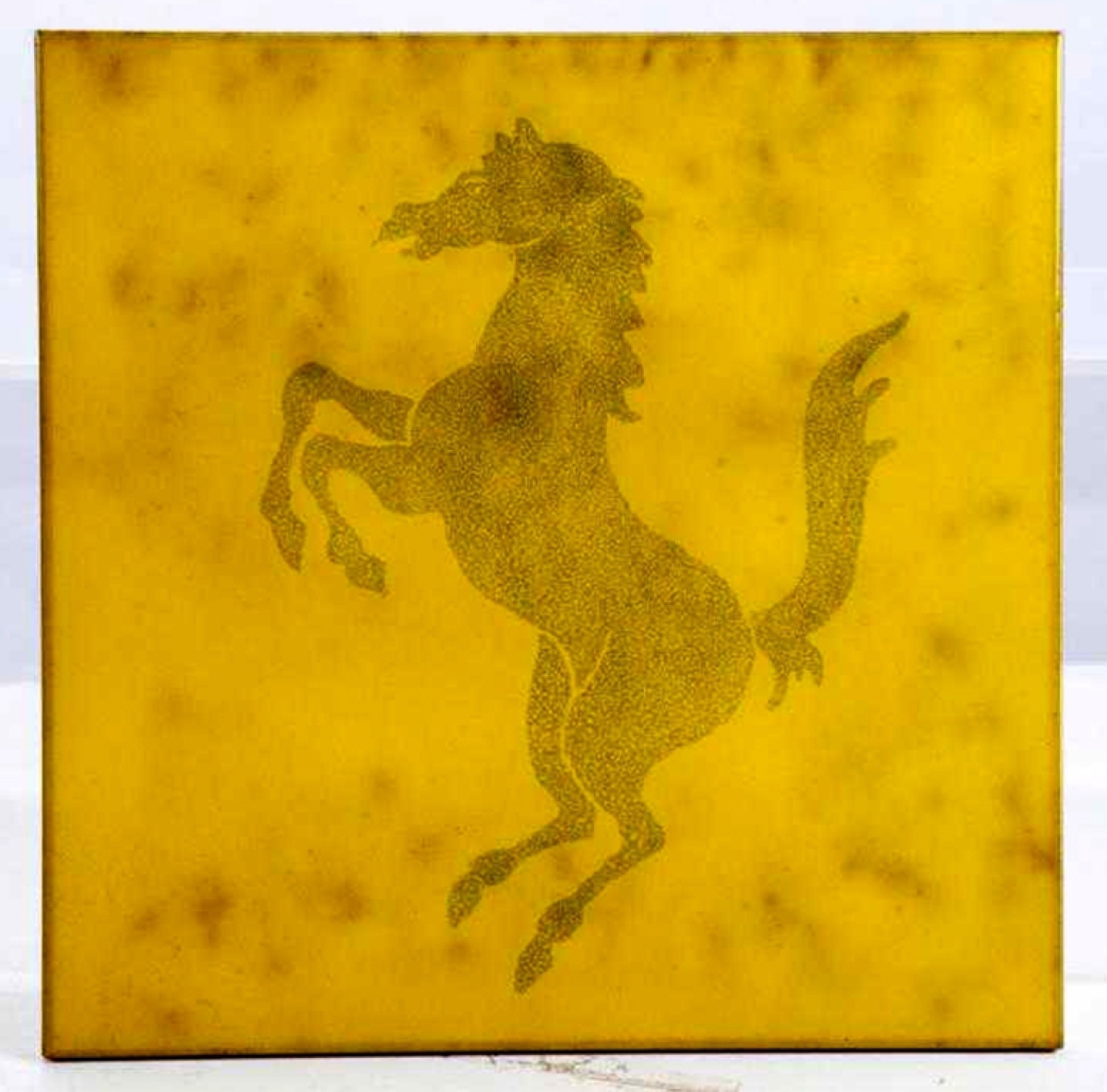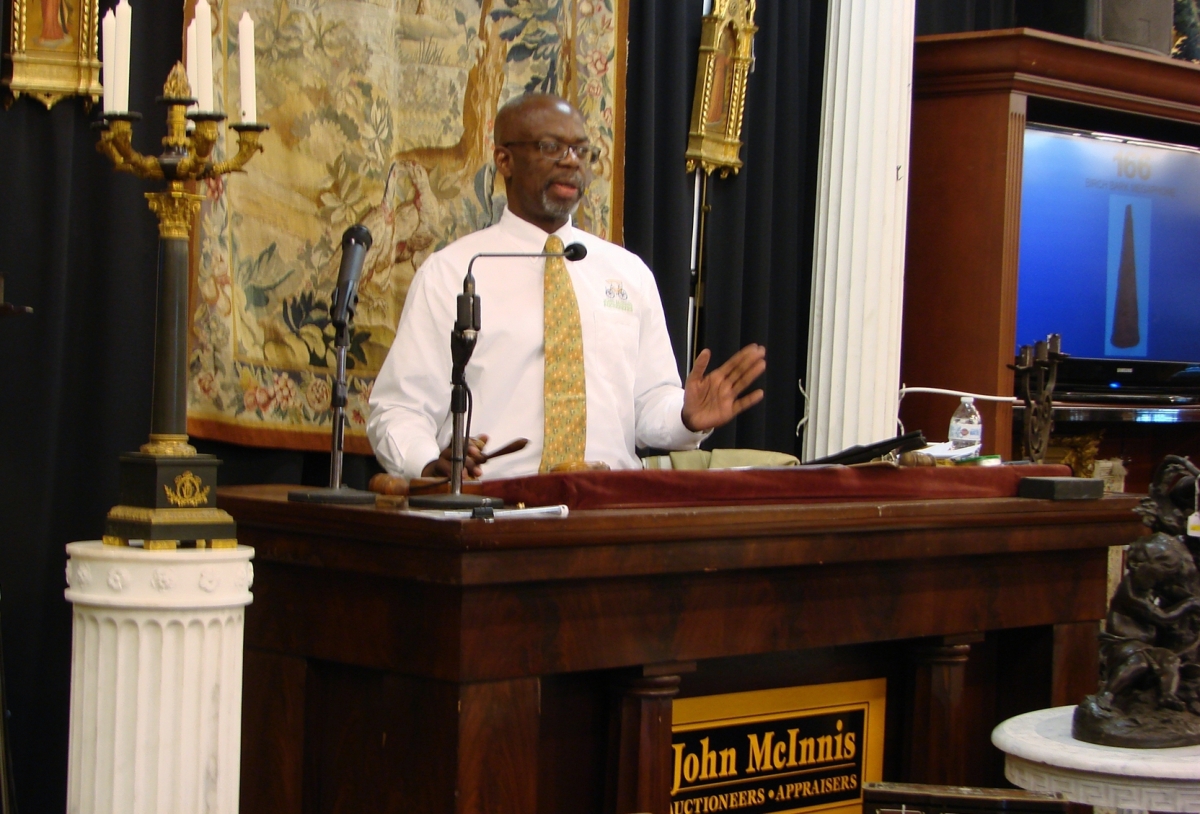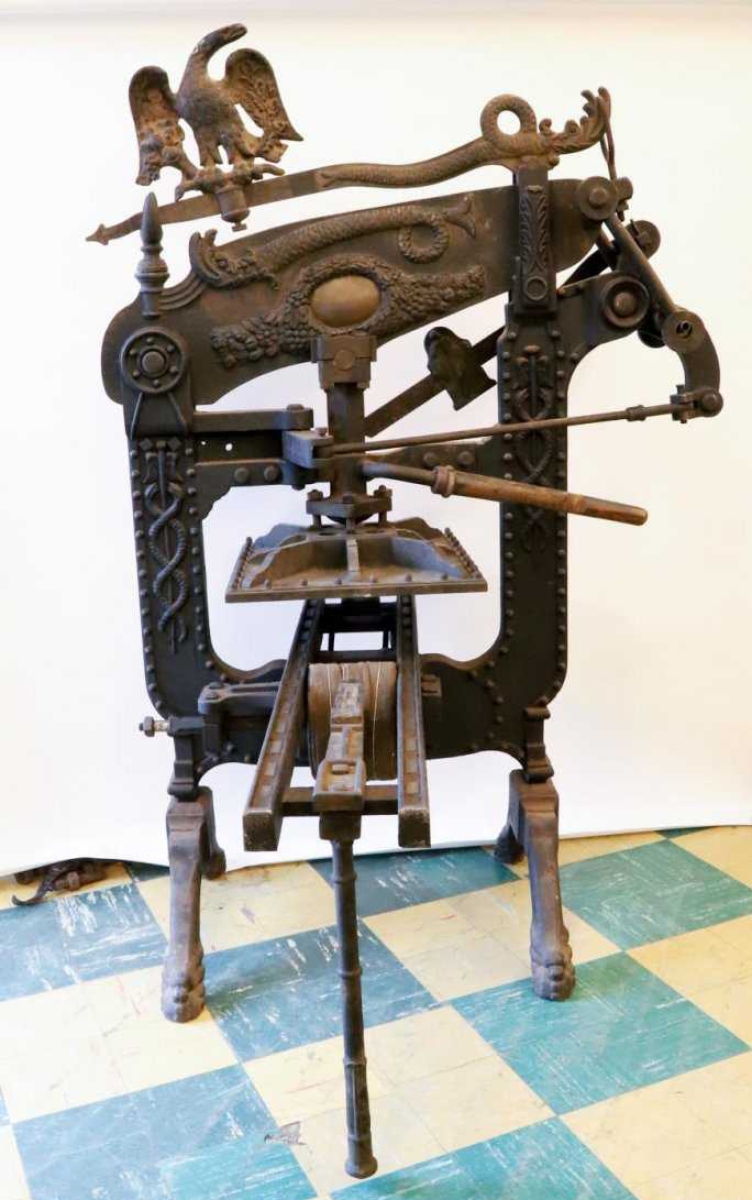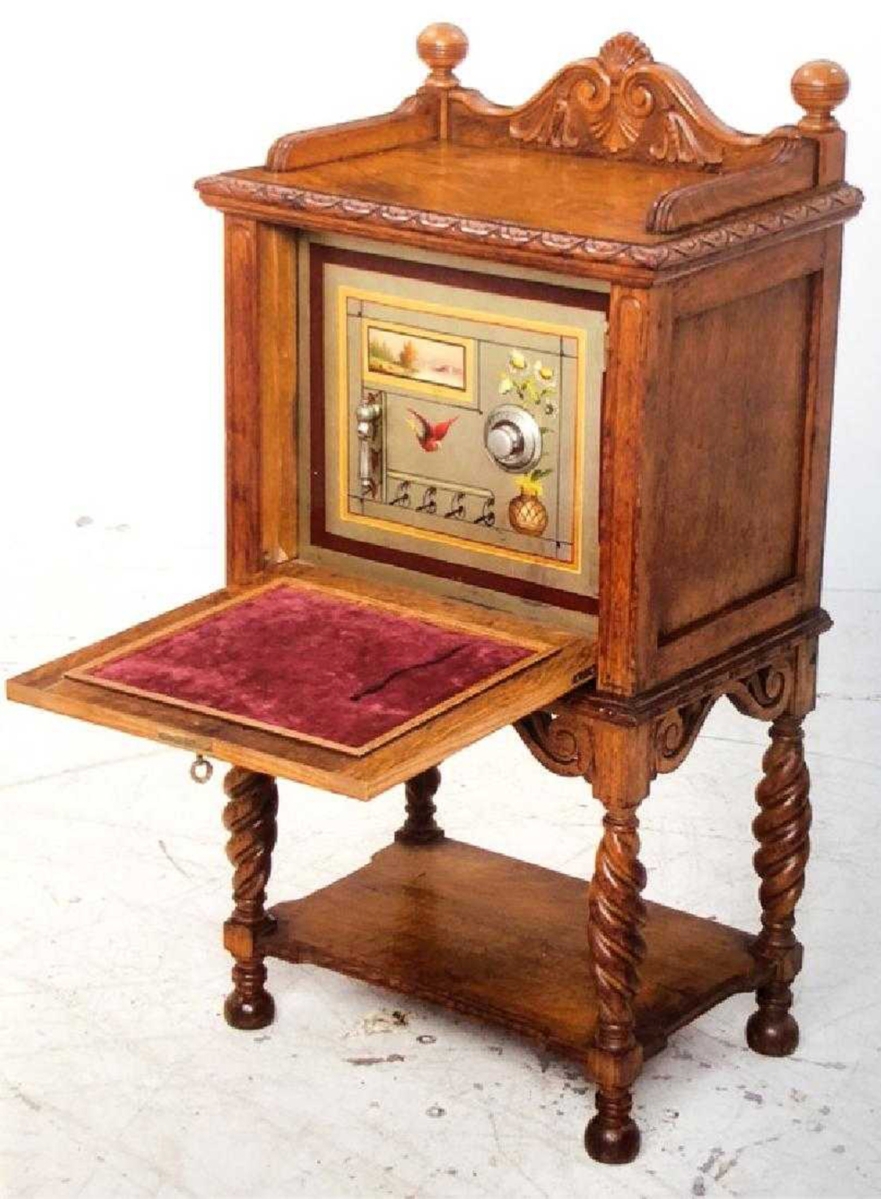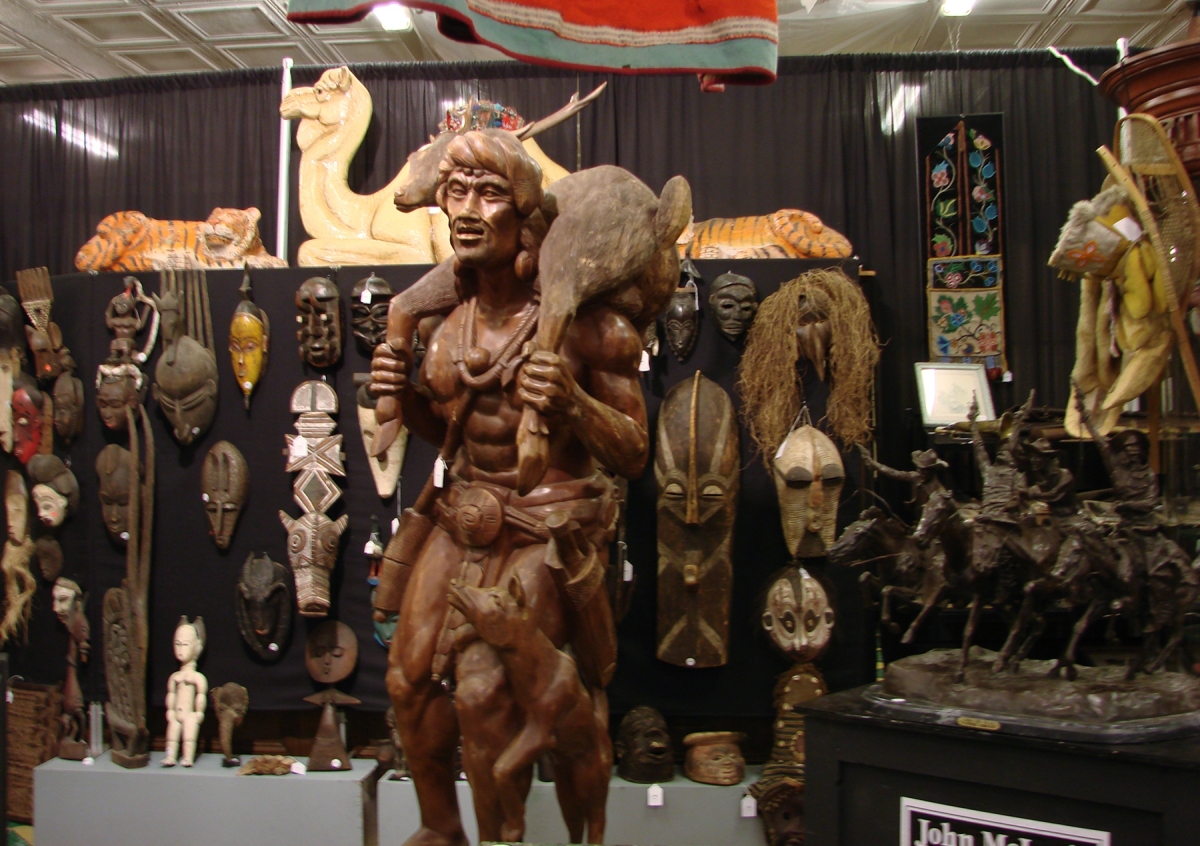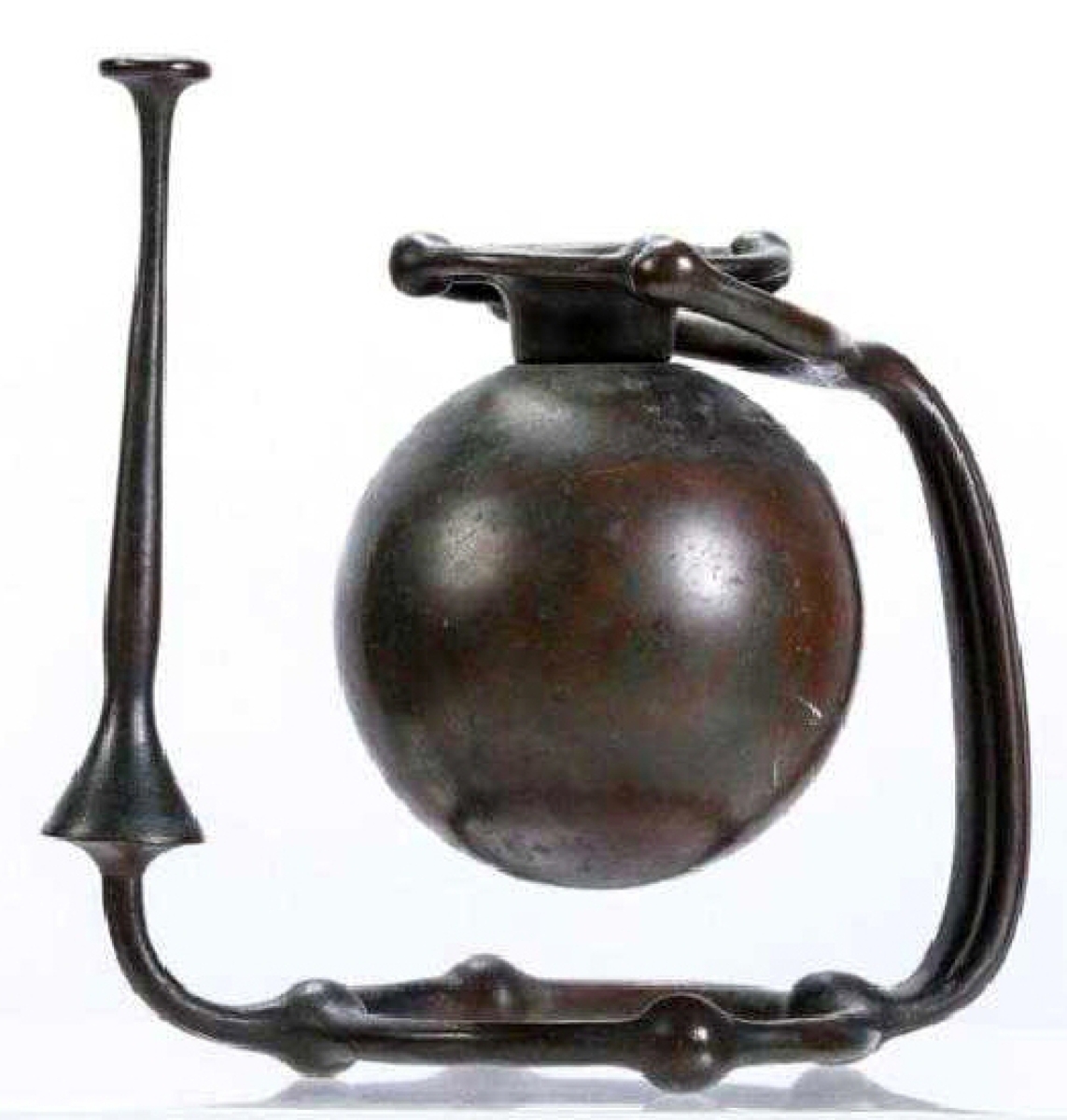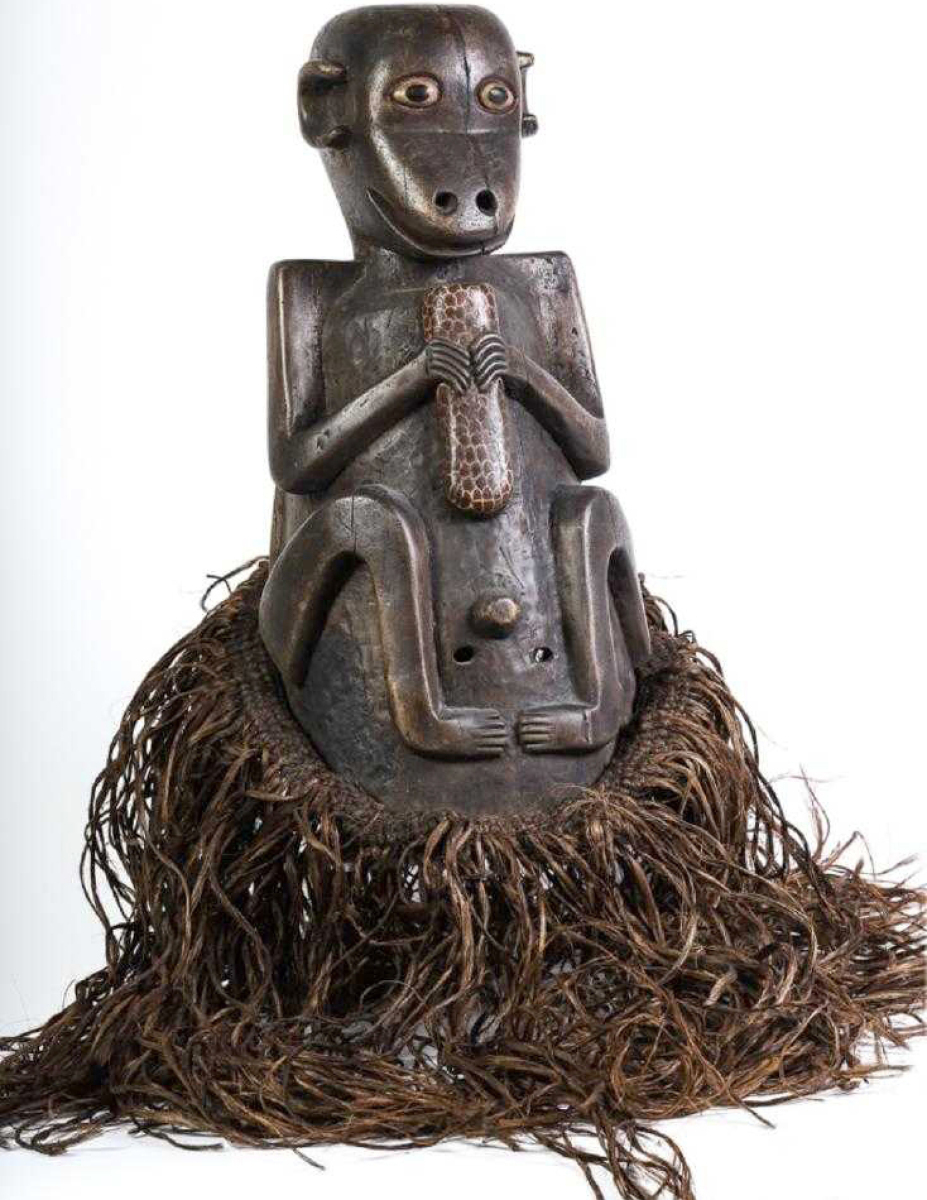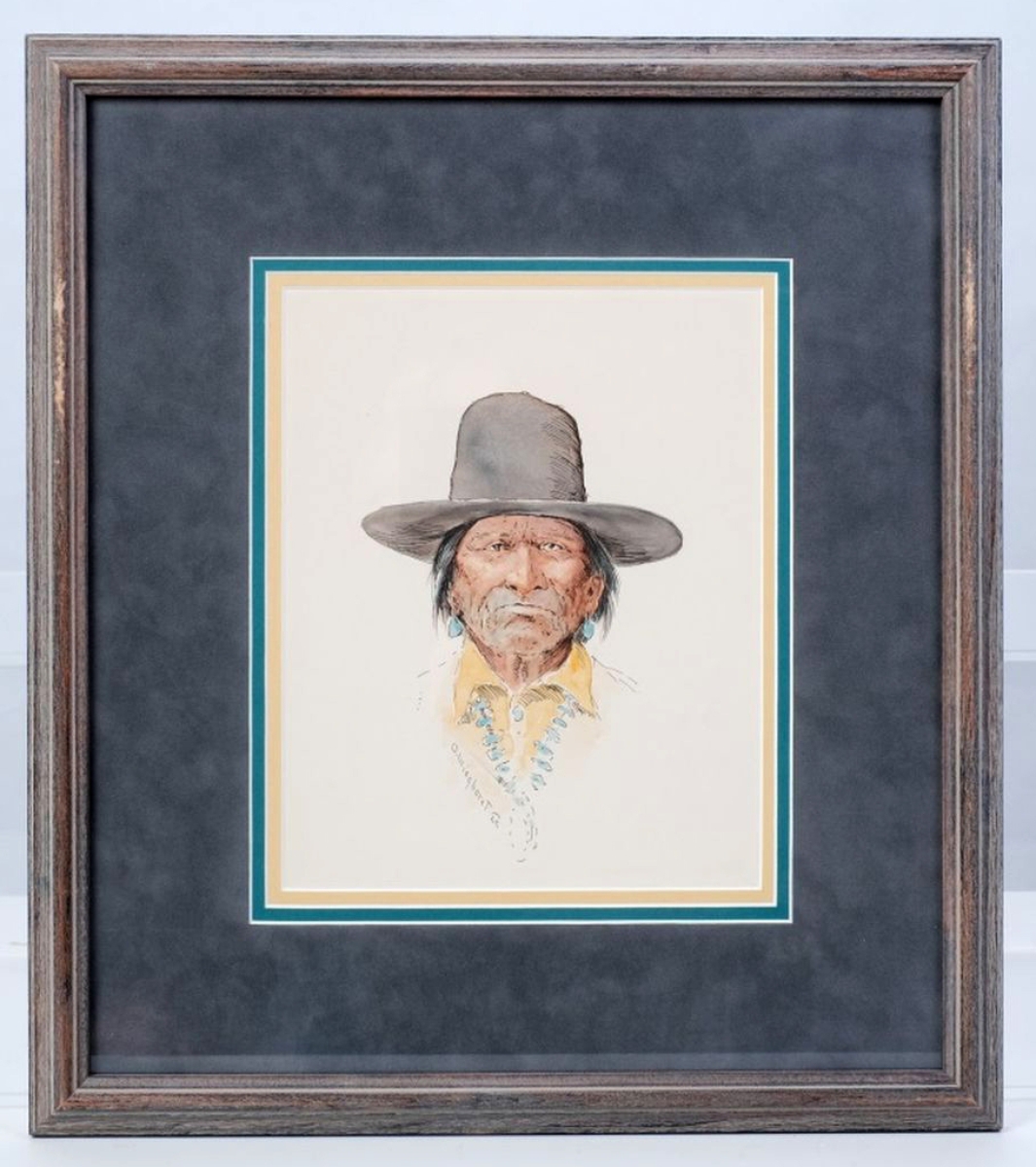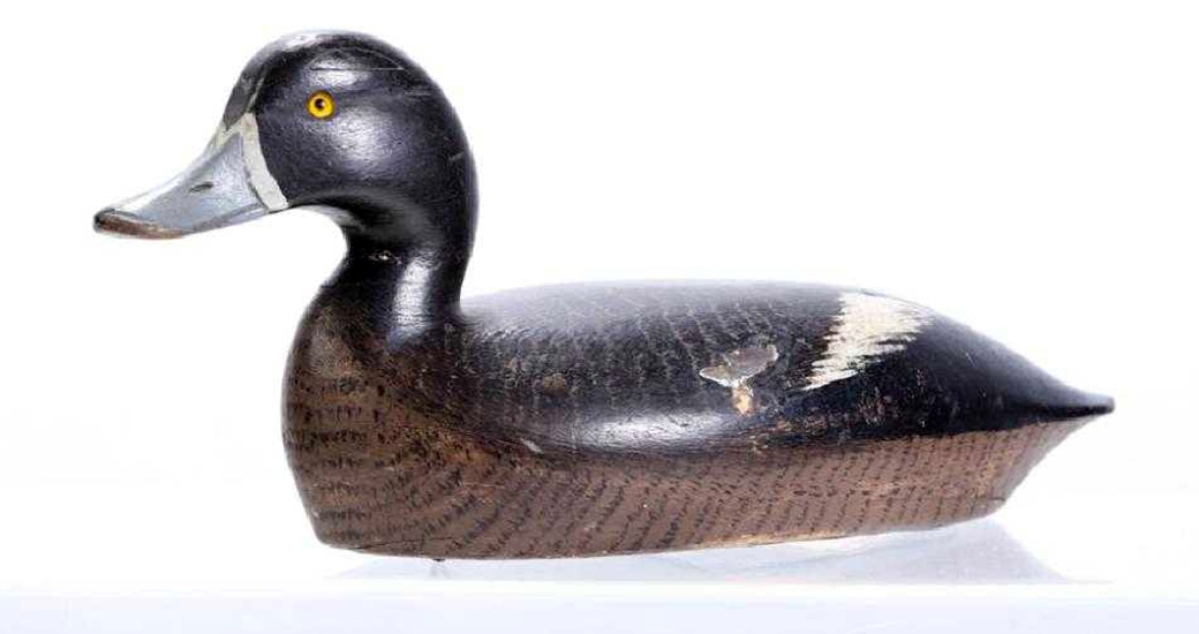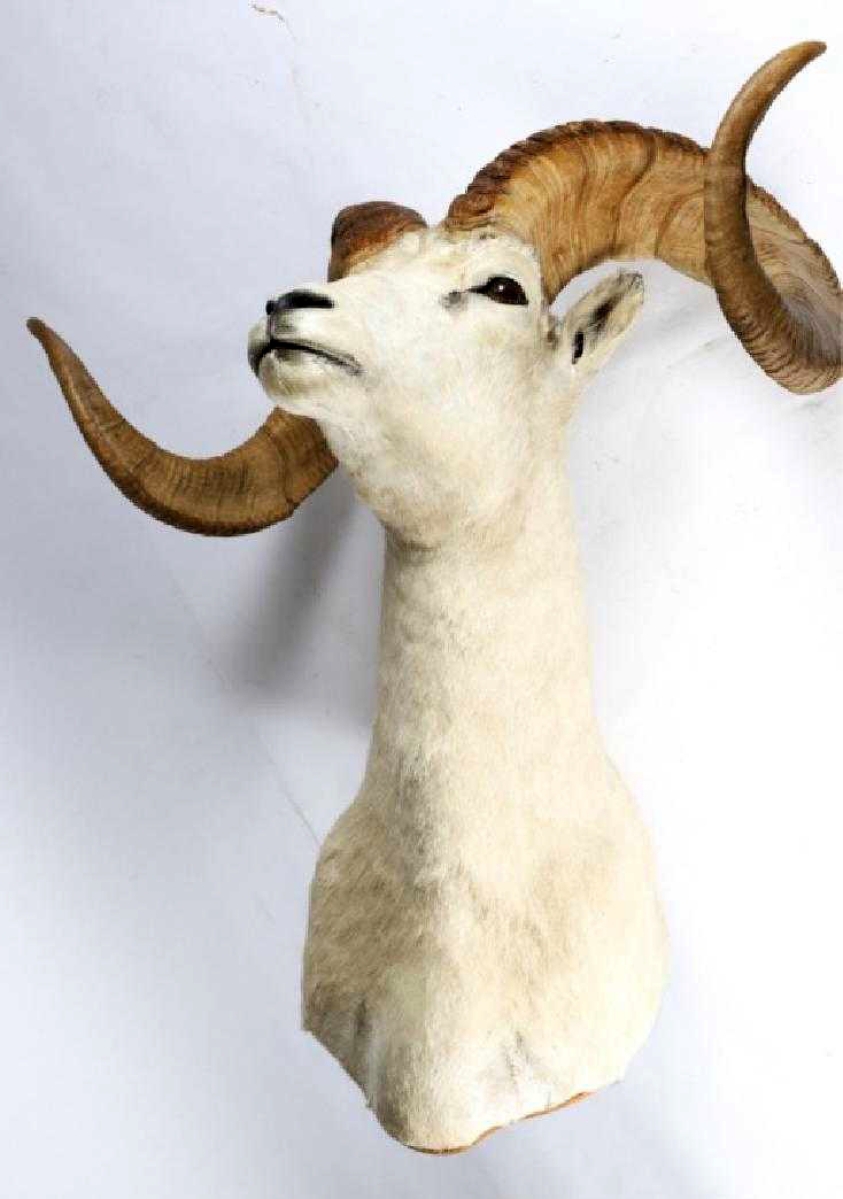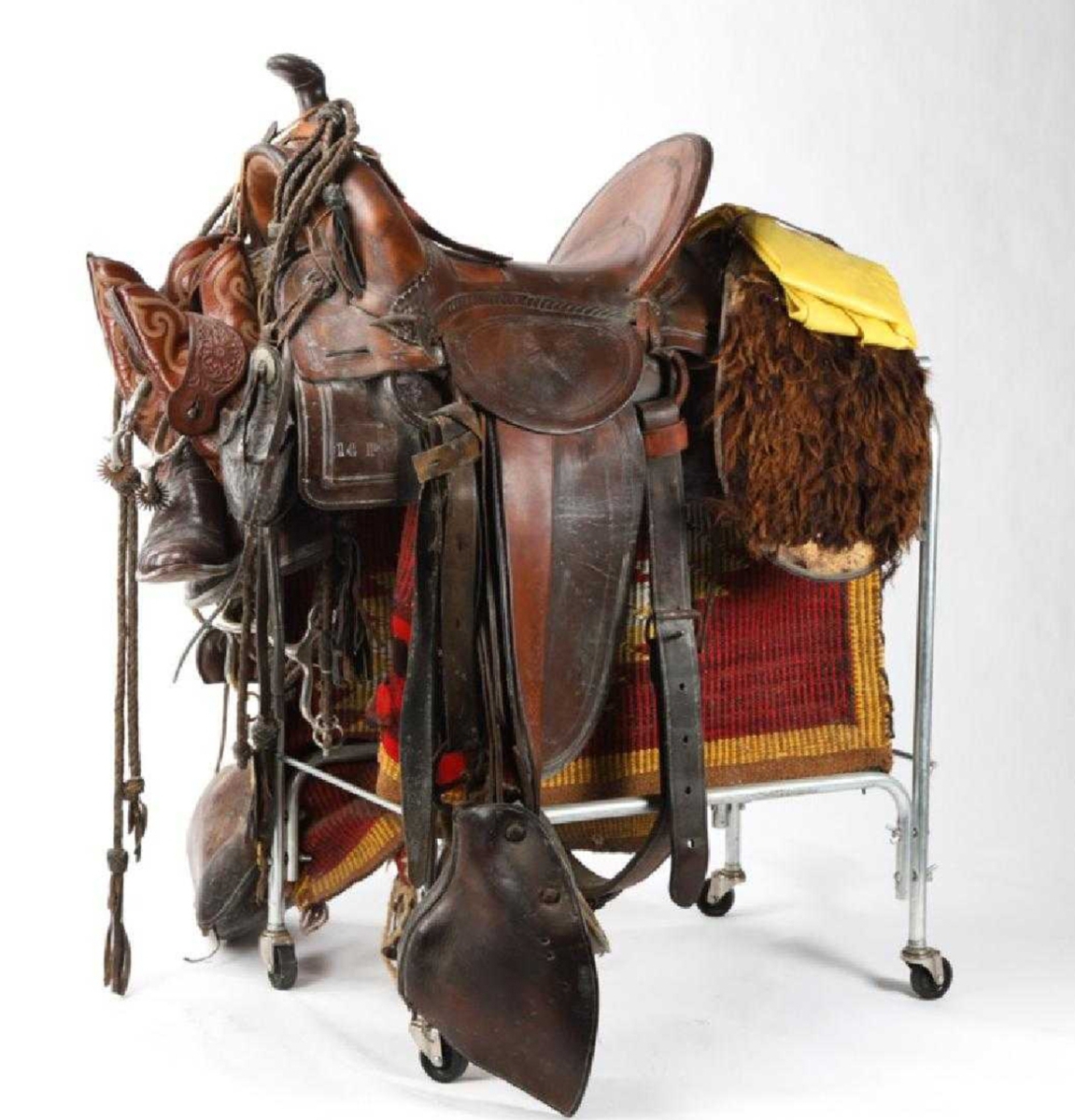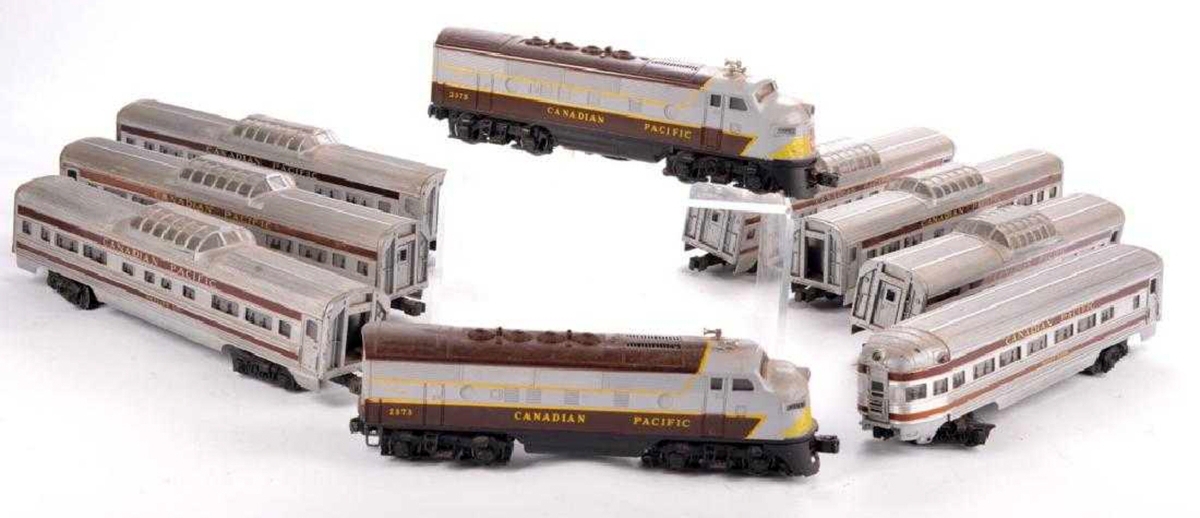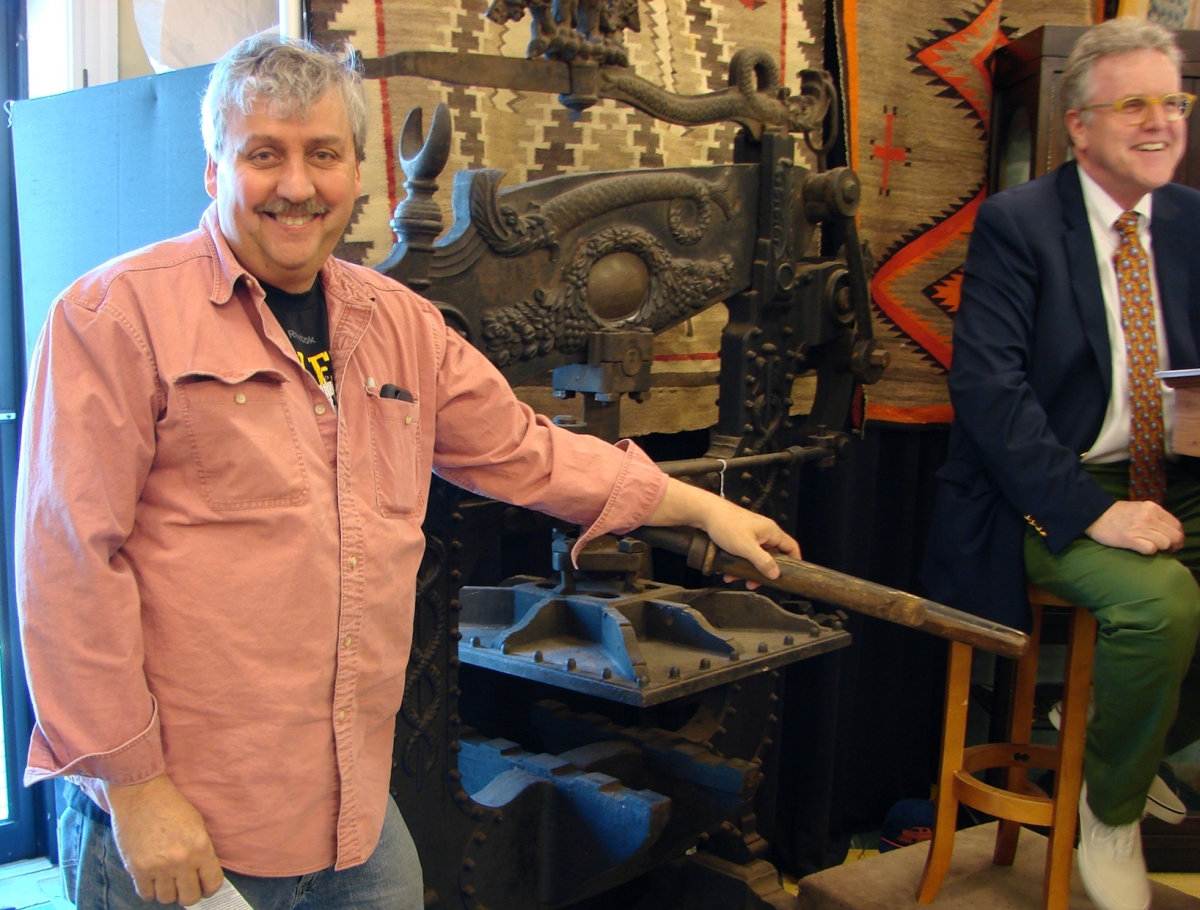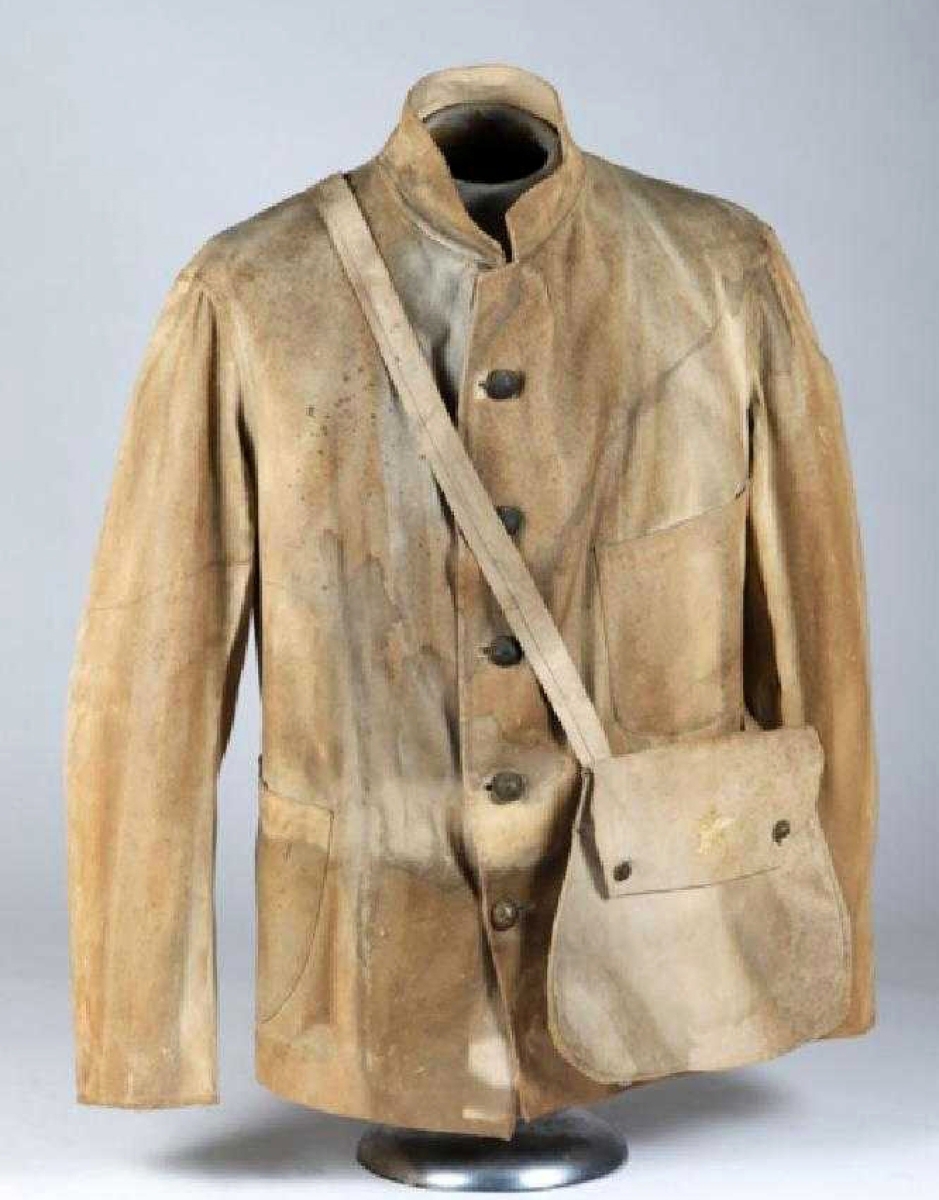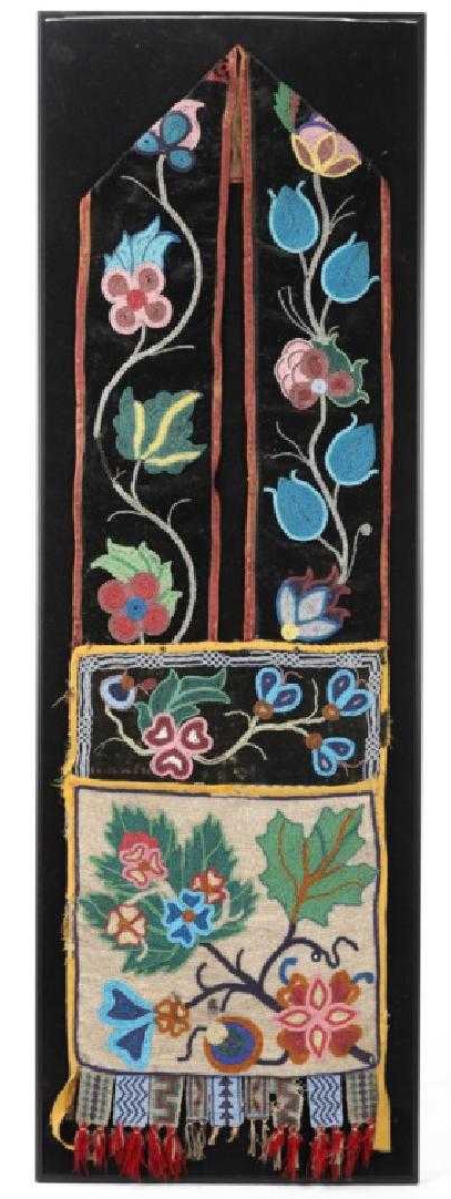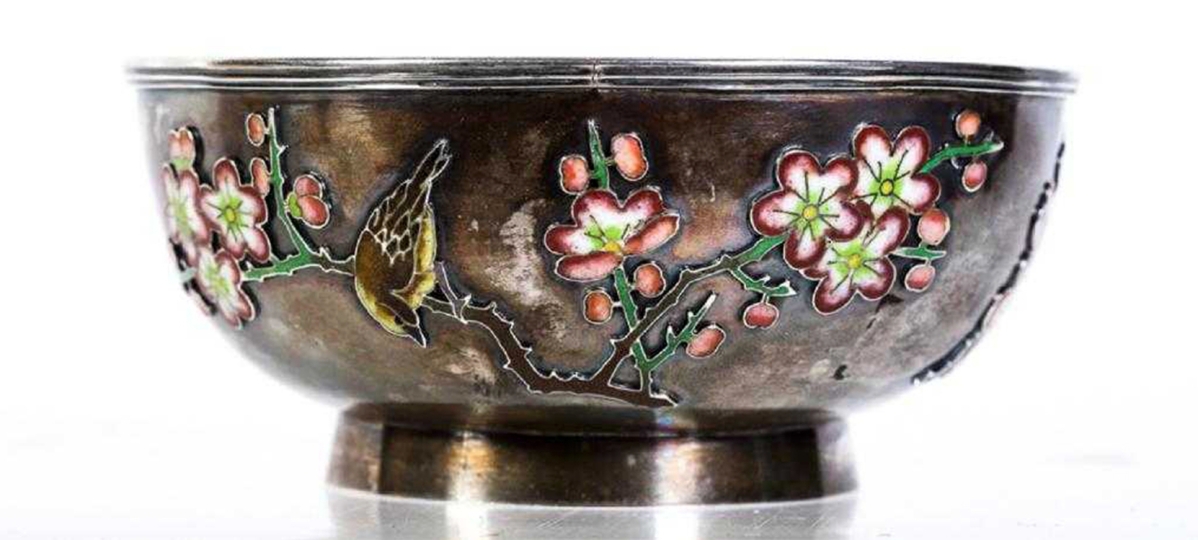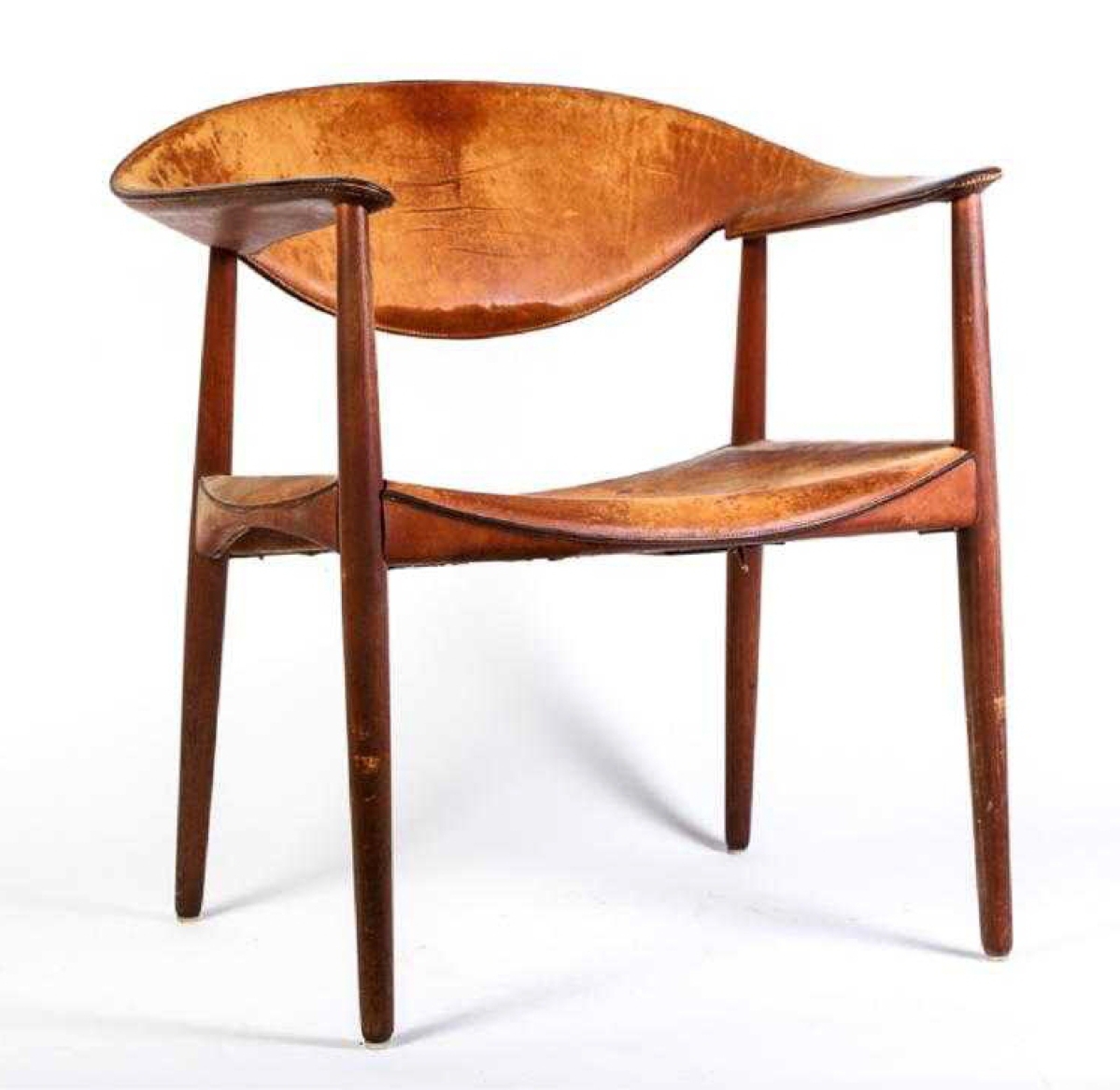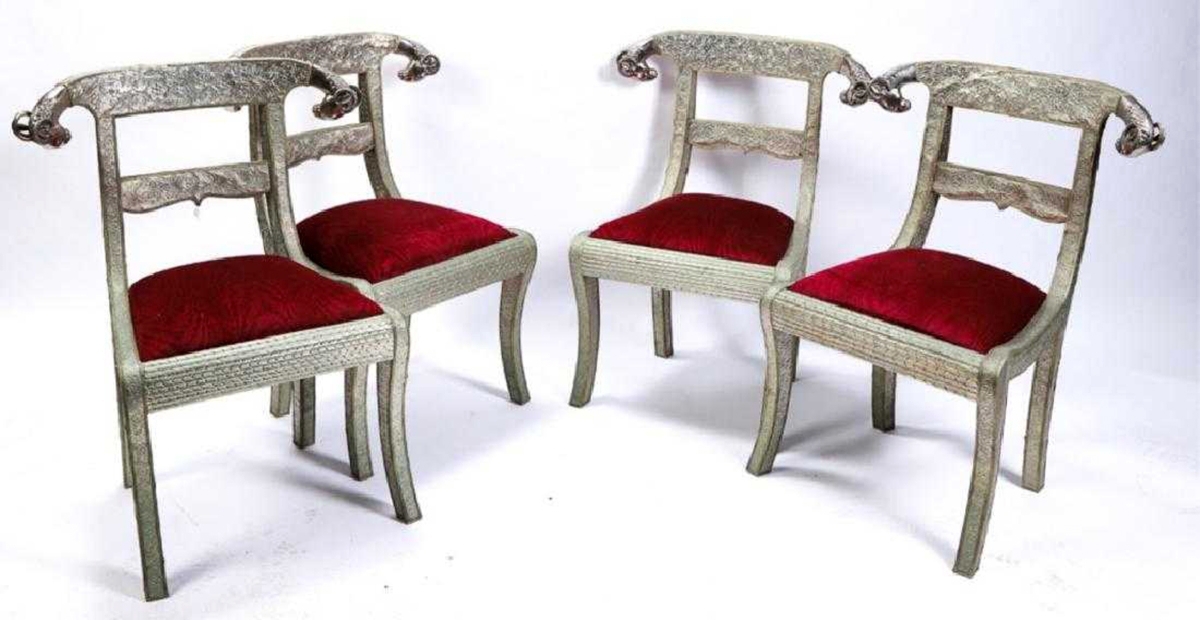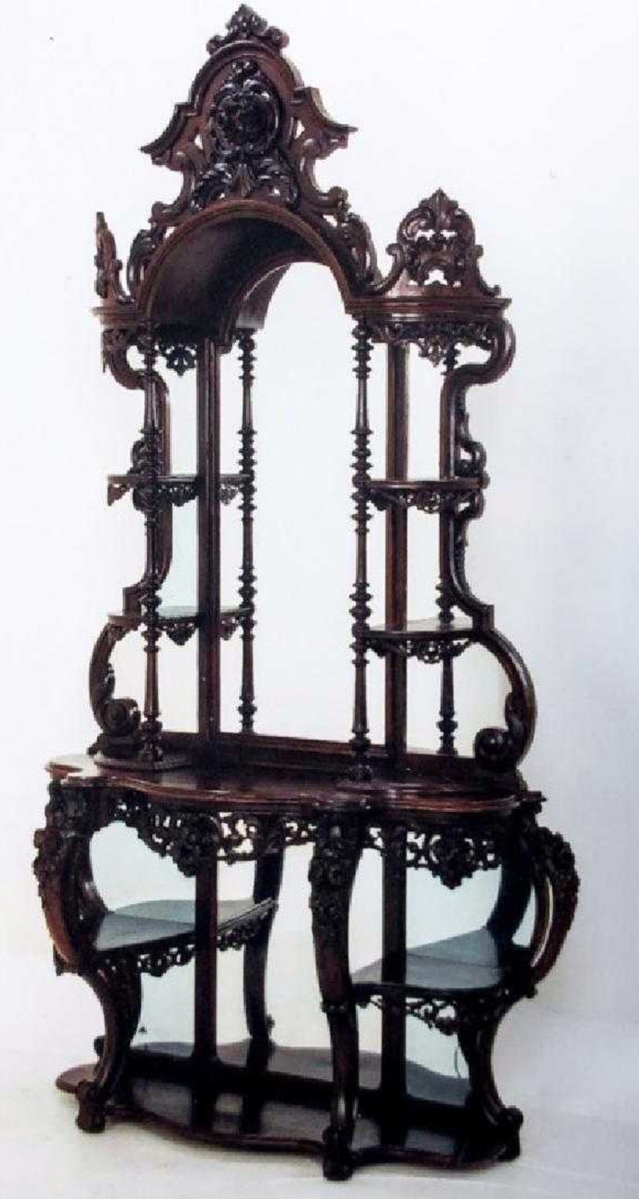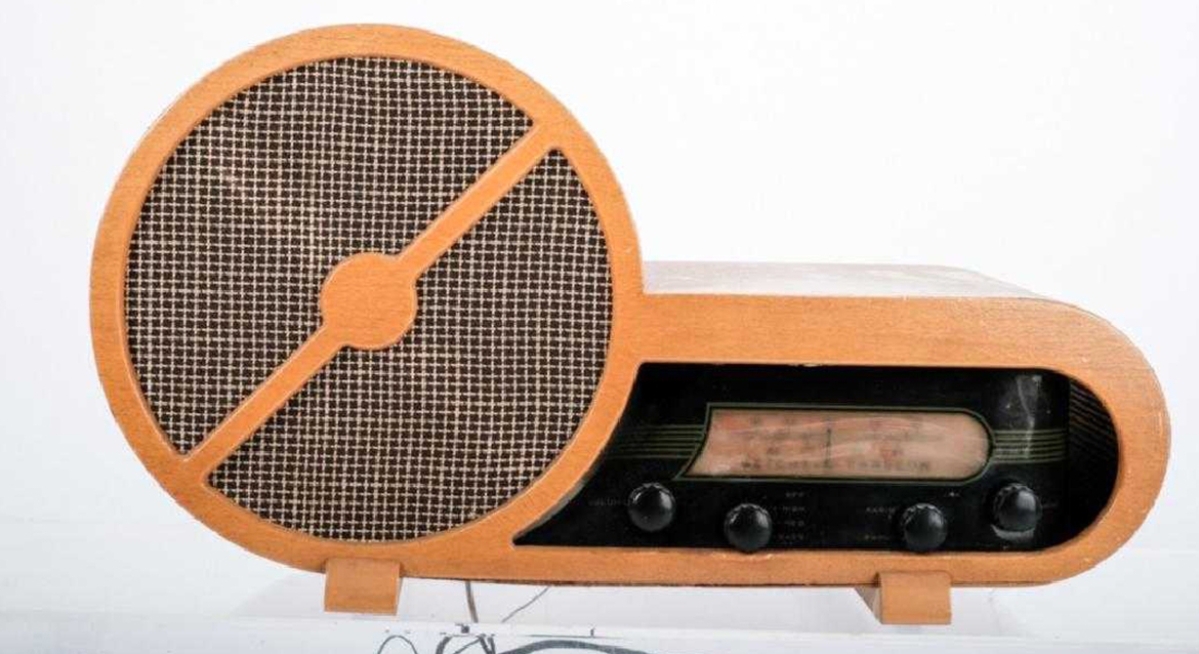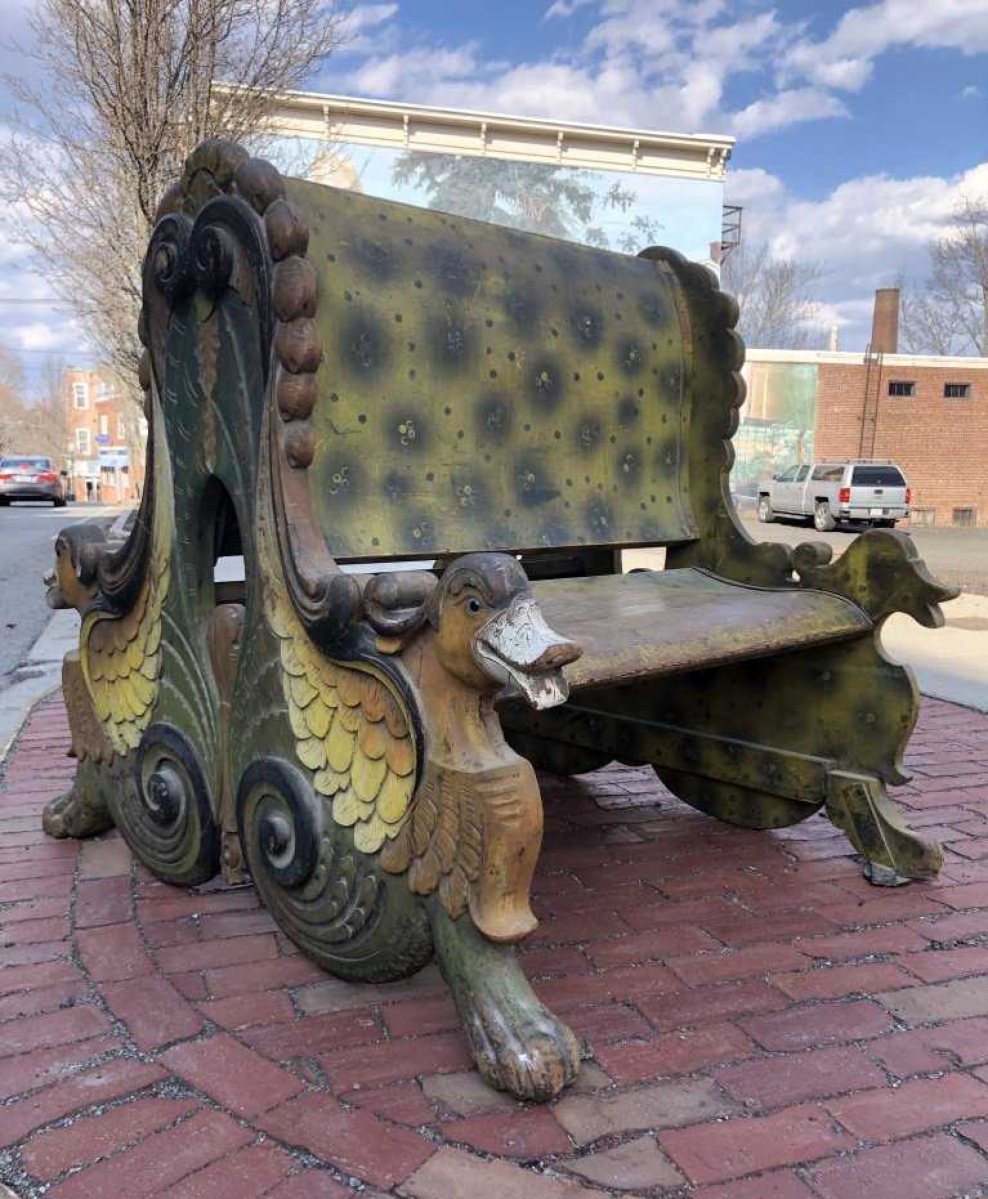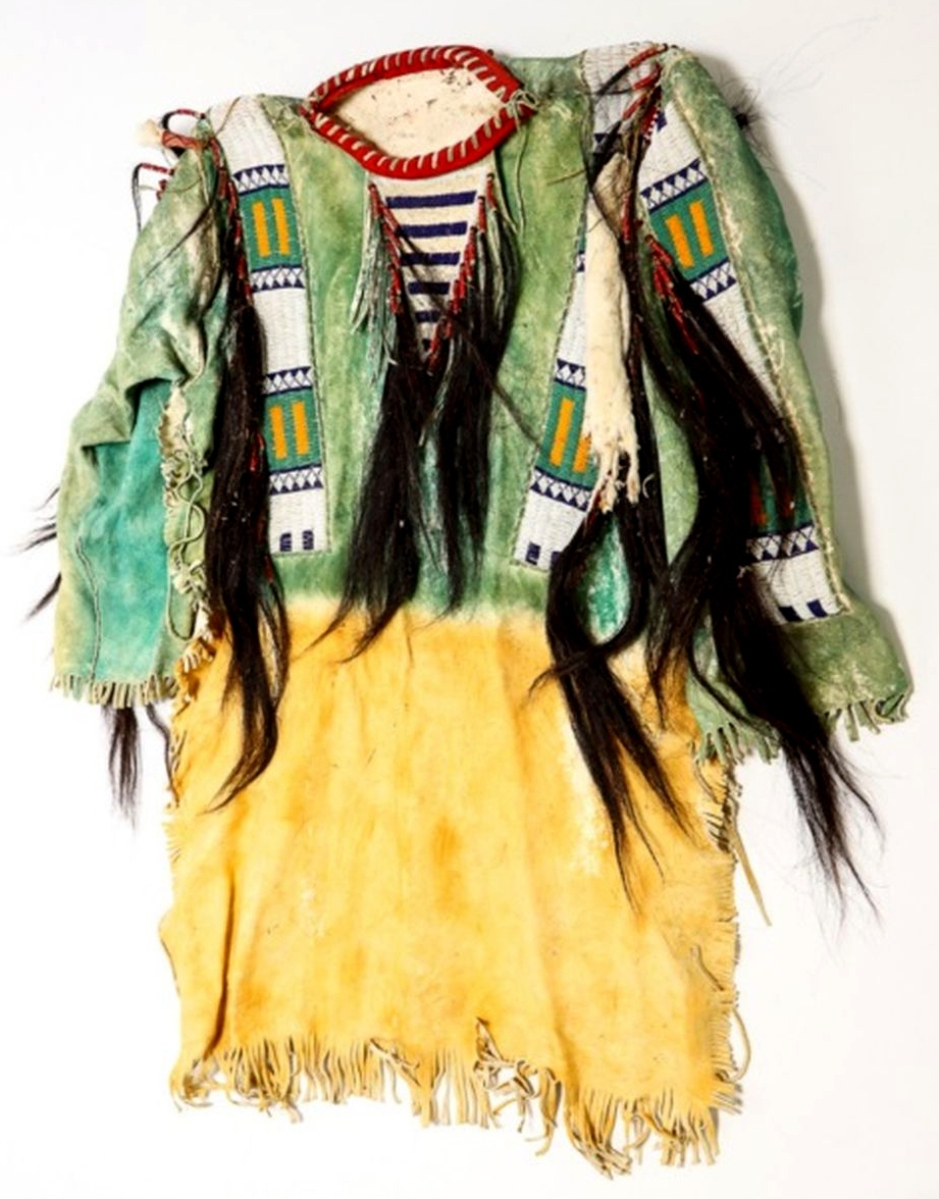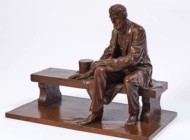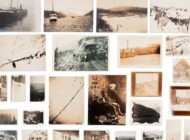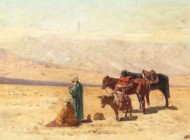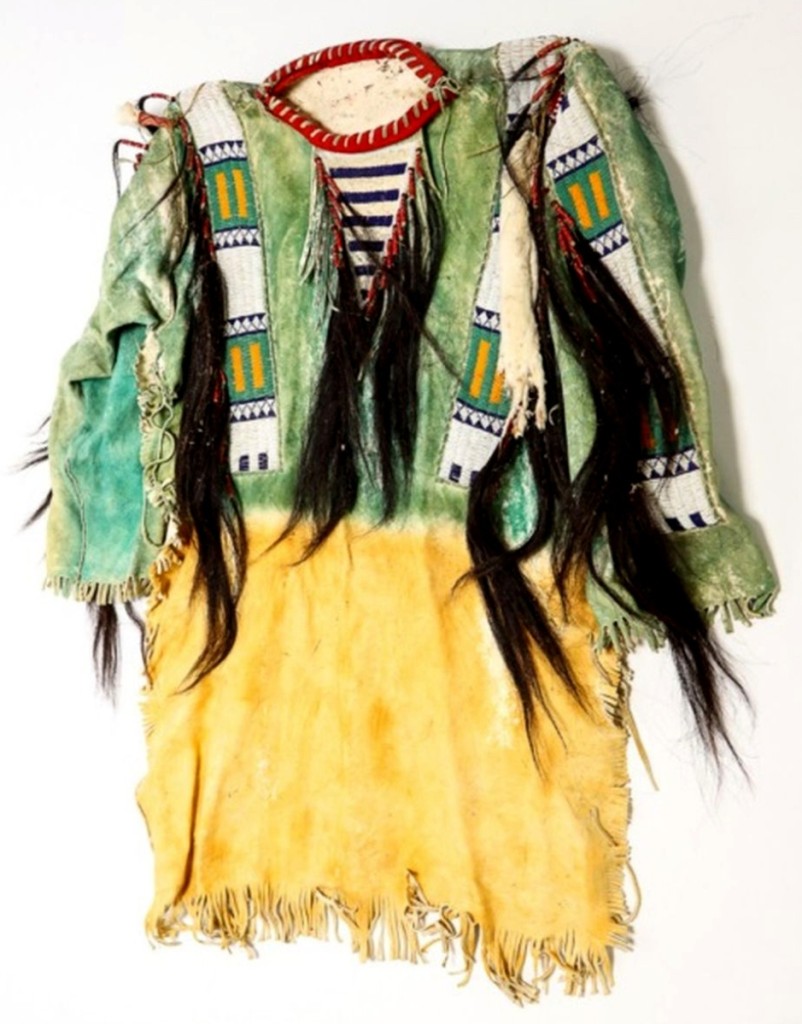
The Sioux beaded and dyed war shirt, with horsehair tassels attached, brought $9,300 and was the second highest price of the sale.
Review and Onsite Photos by Rick Russack, Additional Photos Courtesy John McInnis Auctions
AMESBURY, MASS. – On May 10-11, John McInnis conducted a varied sale with about 850 lots. There may not have been any five- or six-figure prices, but there were numerous interesting items that sold for reasonable prices. Few lots were passed. Included in the sale were nearly 100 lots of Civil War-era and earlier firearms from the estate of a deceased collector; there was a collection of Native American artifacts and western arts, animal mounts, high-end Victorian furniture, midcentury furniture and accessories, toys, carnival-related material (made by a company that admitted to making “crooked” gambling devices), decoys, bronzes, silver, tribal artifacts and more.
The highest priced item in the sale was one of several Oriental rugs. It was briefly described in the catalog as “a blue palace-size rug,” more than 16 feet by 18 feet, but buyers obviously knew what it was as it sold for $9,600. Phone and internet bidding were available, and a good portion of the material went to the internet.
Perhaps it wasn’t the most expensive item in the sale, but it was one that you could confidently say that you’re unlikely to see again. It was a printing press so unusual that a book has been written about it and the few surviving examples in the United States are in museums, including the Smithsonian. It was a “Columbian” press, invented by George Clymer in 1813, a huge, iron press with an impressive iron eagle counterweight at the top. Clymer had been making wooden presses since about 1800 but then developed the “Columbian,” which, through a complicated series of levers and counterweights, made it possible for a printer to print large broadsides, etc, with relatively little effort. Its original $400 selling price at the time discouraged sales in America, where printers were still using, and were satisfied with, older wooden presses. This example had been made in London, where Clymer produced them for a short period after they did not sell well in the United States. It probably weighed more than a ton, although no one at McInnis’s was sure. The press had been sold in a previous sale, but the transaction had been canceled due to transportation difficulties. It sold this time to an internet bidder for $5,160, underbid by a museum bidding on the phone. Gallery director Dan Meader said this price was higher than when it was sold the first time.
The first day of the sale started off with more than 100 lots of firearms and related material. A Winchester repeating rifle, gauge not specified, “the gun that won the West,” and one of the first repeating rifles, realized $4,200, and a .40 caliber Sharps model 1852 reached $2,280. These rifles were advertised as probably accurate to a range of 500 yards. The firearms selection covered the gamut, from a flintlock blunderbuss with European markings on the barrel which sold for $2,700, to a Reising M65 semi-automatic .22 caliber rifle, which is still in production and which earned $2,400. It had belonged to General Thomas Holcomb, a commandant of the Marine Corps and the first Marine to earn the rank of general. The collection also included some uniforms – a Texas Confederate Civil War uniform jacket with a shoulder bag stitched with the Texas star earned $3,000. A collection of ten Confederate brass buttons went out for $1,560.
Also on the first day was a selection of Native American and Western items, one of which turned in the second best result of the sale. It was a Sioux beaded and dyed war shirt with horsehair tassels attached, which brought $9,300, while a Sioux tipi beaded bag, also with horsehair tassels, went out for $840. Also doing well was a Plains silver concho belt with eight tooled and engraved conchos that realized $3,300. Possibly Hopi, a pottery jar with brown geometric designs on an orange slip reached $1,200. A Plains Indian buffalo bone breast plate, with beaded ends and center, seemed reasonable, selling for $240. The first day also included a group of seven watercolor and gouache/ink drawings of Native Americans by Olaf Carl Wieghorst (1899-1988) that sold for about $1,600 each. Wieghorst was a painter of the American West in the vein of Frederic Remington and Charles Russell, and his works are in several museum collections. Perhaps not exactly “Western” but still of interest was a large lot of Klondike photos, stereoviews, and gold nuggets that had descended in the family of William Safford, a Newburyport jeweler who had personally participated in the Klondike gold rush in 1898.
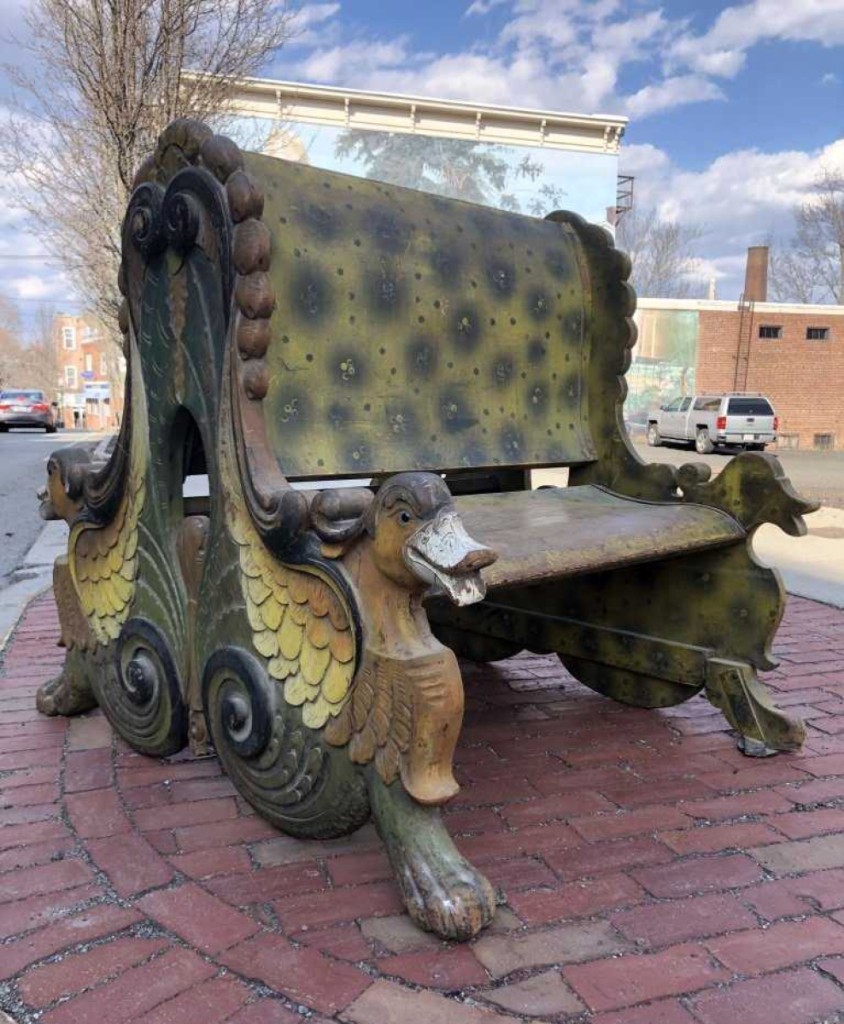
A Nineteenth Century double-sided carved carousel bench, carved with duck heads and other designs, realized $6,000. It had an original, untouched surface.
The second day of the sale included the amusement park material, Midcentury Modern furniture and accessories and a selection of quality Victorian furniture. The amusement park material was local; some from Newburyport and some from Fun-O-Rama in York Beach, Maine.
Drawing the most interest from buyers was a Nineteenth Century double-sided carousel bench, heavily carved with duck heads and more, with its original surface. It sold for $6,000. A Charles Looff Coney Island-style middle row jumper horse, repainted, brought $2,700. There were two large wheel-type fairground games of chance, both made by the H.C. Evans Company. One, with reverse painted horse racing scenes, realized $3,900. According to Wikipedia, the company was formed in 1892 and collapsed in 1955, reportedly having made both “honest and crooked” games. The entry says the company published a catalog of the crooked games, known as the “Secret Blue Book” for casino owners and included rigged dice and marked playing cards and ruby red glasses to read them. Reprints of the catalog are available on the internet for $15. For the game room, there were also two operating jukeboxes. One was a 1968 Seeberg Stereo LS 2 “Gem” 160, filled with 1960s country and western 45 rpm records, which sold for $600, and there was an Esco “Candid Camera” penny arcade game that would let you “see yourself as others see you” and earned $600.
Midcentury furniture included a set of six flat bar armchairs designed by Mies van der Rohe for Knoll Brno, which may have been a very good buy at $2,280. These chairs were originally designed about 1929-30 for the bedroom of the Tugendhat House in Brno, Czech Republic. A set of six fiberglass chairs designed by Charles and Ray Eames for Herman Miller reached $1,020. Topping the Midcentury Modern furniture was a labeled, leather and wood armchair designed by Willie Beck, which went to one of two phone bidders for $3,900.
An active buyer at most McInnis sales is Haverhill, Mass., dealer Paul Martin. He operates his antiques business from a large, old brick mill building he purchased about 15 years ago, and he buys a variety of furniture and decorative items. He has a concern that most antiques dealers do not have: the fluctuation in the value of the dollar compared to other currencies. Much of his business is conducted with Canadian and European dealers, buying in quantity. As the dollar changes, so does business. He has built up a good business renting to movie production companies and to designers seeking a specific look. He occasionally posts pictures of interesting furniture on Facebook, and says it has been helpful to business. And he uses an eBay store. “It’s the ‘look’ that’s important. Age or provenance is of less interest, especially to the younger buyers,” he told Antiques and The Arts Weekly. “That’s true of Facebook and stuff in the shop. More and more people are shopping from their living rooms, so they find stuff they like on the internet. Customers want to see fresh stuff. If it doesn’t sell quickly, I may own it for a while. But there’s plenty of room in the building, and sooner or later it will sell.”
A few days after the sale, John McInnis talked about the auction’s results. “Our gross of about $460,000 was over our estimates, so that makes it a good sale, and we had a number of retail buyers in the room. That’s encouraging. One third of the stuff sold over our estimates, one third was within our estimates and one third wasn’t. Which means there were some good buys for the dealers in the room. Very little was passed. We have a bunch of sales planned over the next couple of months, including a good maritime sale, a good painting sale and a good Americana sale. Stay tuned.”
Prices given include the buyer’s premium as stated by the auction house.
For information, 800-822-1417 or www.mcinnisauctions.com.

